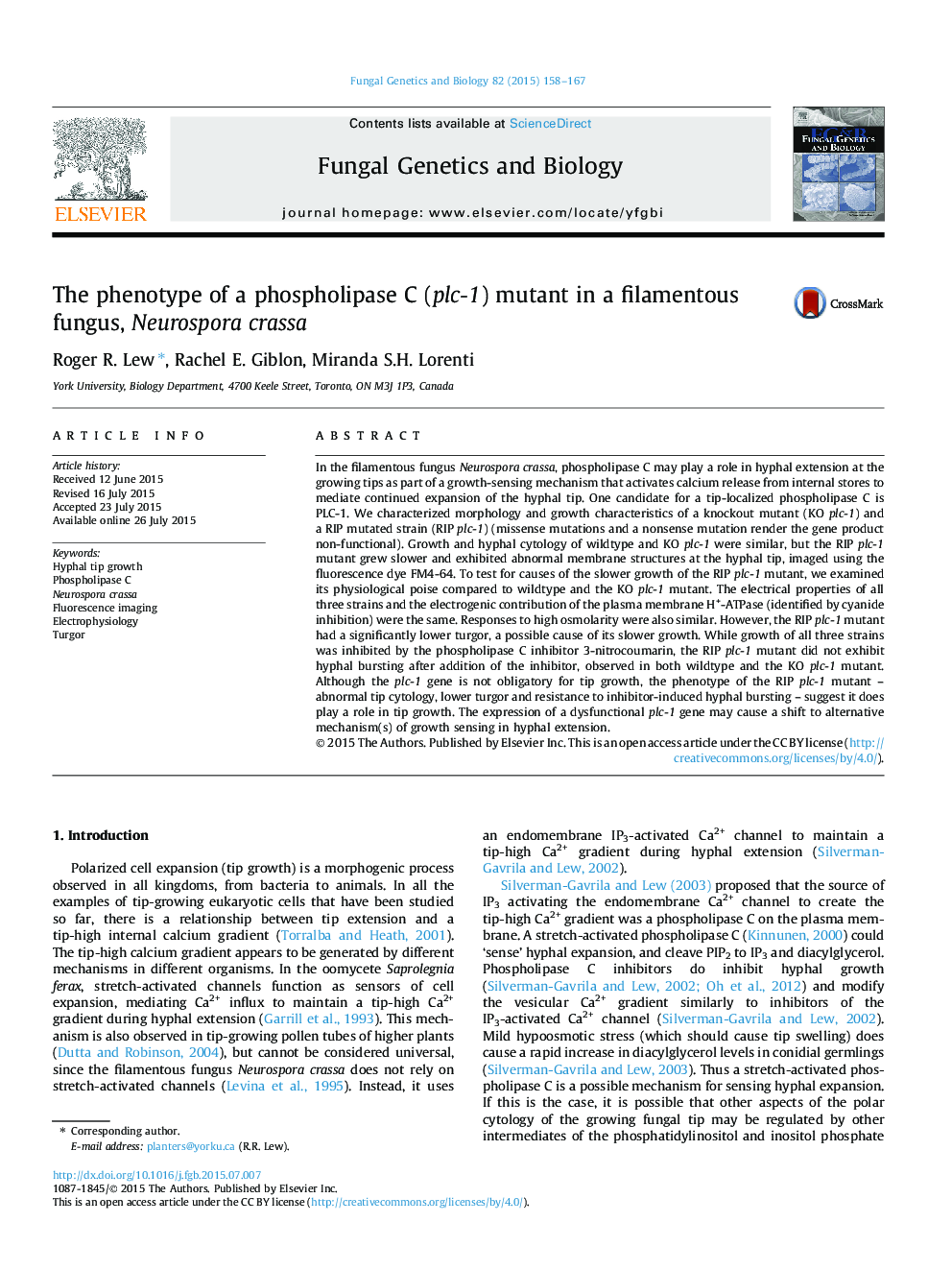| Article ID | Journal | Published Year | Pages | File Type |
|---|---|---|---|---|
| 8470636 | Fungal Genetics and Biology | 2015 | 10 Pages |
Abstract
In the filamentous fungus Neurospora crassa, phospholipase C may play a role in hyphal extension at the growing tips as part of a growth-sensing mechanism that activates calcium release from internal stores to mediate continued expansion of the hyphal tip. One candidate for a tip-localized phospholipase C is PLC-1. We characterized morphology and growth characteristics of a knockout mutant (KO plc-1) and a RIP mutated strain (RIP plc-1) (missense mutations and a nonsense mutation render the gene product non-functional). Growth and hyphal cytology of wildtype and KO plc-1 were similar, but the RIP plc-1 mutant grew slower and exhibited abnormal membrane structures at the hyphal tip, imaged using the fluorescence dye FM4-64. To test for causes of the slower growth of the RIP plc-1 mutant, we examined its physiological poise compared to wildtype and the KO plc-1 mutant. The electrical properties of all three strains and the electrogenic contribution of the plasma membrane H+-ATPase (identified by cyanide inhibition) were the same. Responses to high osmolarity were also similar. However, the RIP plc-1 mutant had a significantly lower turgor, a possible cause of its slower growth. While growth of all three strains was inhibited by the phospholipase C inhibitor 3-nitrocoumarin, the RIP plc-1 mutant did not exhibit hyphal bursting after addition of the inhibitor, observed in both wildtype and the KO plc-1 mutant. Although the plc-1 gene is not obligatory for tip growth, the phenotype of the RIP plc-1 mutant - abnormal tip cytology, lower turgor and resistance to inhibitor-induced hyphal bursting - suggest it does play a role in tip growth. The expression of a dysfunctional plc-1 gene may cause a shift to alternative mechanism(s) of growth sensing in hyphal extension.
Keywords
Related Topics
Life Sciences
Biochemistry, Genetics and Molecular Biology
Cell Biology
Authors
Roger R. Lew, Rachel E. Giblon, Miranda S.H. Lorenti,
